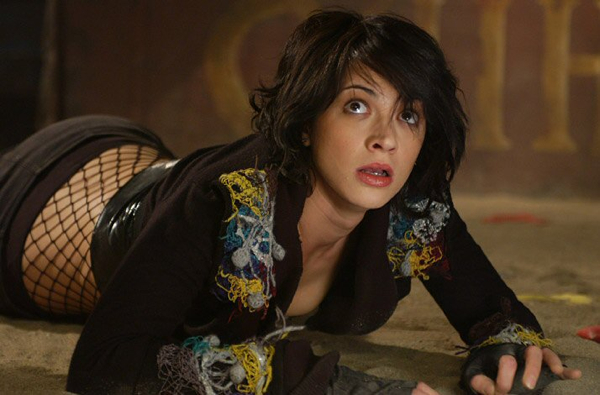Movie review by Greg Carlson
While there are plenty of things to say about George Romero’s legendary horror franchise, new entry “Land of the Dead” disappoints more than it delights. Almost forty years after the director’s masterpiece “Night of the Living Dead” rewrote the cinematic bible on the ins and outs of flesh-eating ghouls, Romero has yet to top the unsettling vibe of his 1968 classic. While many Romero devotees argue on behalf of the macabre satire of “Dawn of the Dead” (1978), “Night” is still the most powerful, its low-budget look enhancing the foreboding feeling that this sort of nightmare could actually take place. “Land of the Dead” does not measure up to the other movies in the series, but it offers enough gore and almost enough humor to satisfy the hardest of the hardcore Romero fan-base.
Following an intense opening credit sequence, “Land of the Dead” quickly sketches out the political and physical territory of present day zombie-human relations, which are predictably poor. Only the well-heeled have managed to secure relative safety inside the razor wire of Fiddler’s Green, a community led by greasy businessman Kaufman (Dennis Hopper, in a nicely twitchy, nose-picking performance). Outside in Uniontown, the less fortunate struggle to make ends meet, while yet another social class composed of citizen-soldiers moves back and forth across the moat that separates them from the undead in order to blast out the brains of the dangerous animated corpses.
Among the warriors are Riley (Simon Baker), a matter-of-fact veteran looking to hang up his rifle, Riley’s sidekick Charlie (Robert Joy), the angry Cholo (John Leguizamo), and tough, assertive Slack (Asia Argento). Tooling around on “Mad Max”-esque motorcycles and in a steel-plated, missile-launching behemoth called Dead Reckoning, the mercenaries take turns with zombies in the role of predator and prey. While most of the zombies are distinguished only by their occupation-identifying attire (a well-loved genre hallmark) – butcher, cheerleader, clown, priest, ballplayer, etc. – a former mechanic/gas station attendant named Big Daddy (Eugene Clark) stands out. Struggling to participate in the normal routine of his former life, Big Daddy shuffles around looking for cars to fill with fuel.
Functioning at a higher level than most of the other meat puppets, Big Daddy turns out to be a rather resourceful corpse. Crudely organizing nearby zombies into a functional mob, Big Daddy teaches his fellow cadavers how to use weapons, an evolutionary quantum leap that poses serious problems for the not-yet-departed. Romero has a great deal of fun building sympathy for his lumbering stiffs, and his apocalyptic vision offers glimpses of the grotesque ways in which people have turned zombie-killing into grisly carnival amusements. The filmmaker’s almost sly critique of segregation and class division is too thin to hold up to much scrutiny, but Romero deserves some credit for trying.
The film’s special effects are superb, if the sight of rotting flesh and decomposing features doesn’t turn your stomach. Greg Nicotero, Howard Berger, and their talented team from KNB EFX Group have created arguably the most phenomenal zombie makeup designs to date. Beyond the grim visages, however, the film’s modest budget prevents Romero from fully realizing the upper limits of his profound imagination. Hopefully, “Land of the Dead” will meet with enough success at the box office to merit another installment. It would be something to see what Romero could do with more substantial capital at his disposal.
